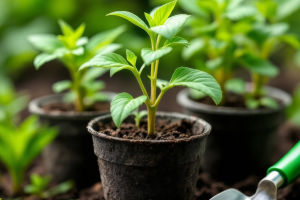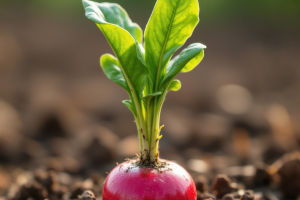Invasive plants are one of the most significant environmental threats to local ecosystems worldwide.
These plants, which are not native to the areas they invade, often spread rapidly, outcompeting native species for resources such as water, nutrients, and sunlight.
Their ability to thrive in new environments can lead to a cascade of negative effects on the biodiversity, structure, and function of local ecosystems. So, how exactly do invasive plants impact local ecosystems, and why should we be concerned about their spread?
What Are Invasive Plants?
Invasive plants, also known as exotic or non-native species, are plants that have been introduced to areas where they do not naturally occur, often by human activities such as agriculture, trade, or landscaping. Unlike plants native to a specific region, invasive species do not have natural predators or competitors in their new environment, allowing them to grow unchecked. Over time, invasive plants can displace native species, disrupt ecological processes, and even alter entire landscapes.
Displacement of Native Species
One of the most harmful effects of invasive plants is their ability to outcompete native plant species. Many invasive plants grow quickly, often forming dense monocultures that shade out native plants, reducing the overall plant diversity in the area.
For example, in North America, plants like the kudzu vine and garlic mustard have spread aggressively, taking over large swathes of land and choking out native plants that wildlife depend on. This displacement can be devastating to local ecosystems, as native species often play specialized roles that cannot be filled by invasive plants.
Reduction in Biodiversity
Biodiversity is essential for the stability and resilience of ecosystems. Native species have evolved over long periods to interact with one another in a balanced way. Invasive plants, however, often disrupt these interactions, leading to a decline in biodiversity.
For example, invasive plants may not provide the same resources (such as food or habitat) for local wildlife, leading to population declines in species that rely on native plants for survival. This reduction in biodiversity weakens ecosystem services, such as pollination, nutrient cycling, and soil stabilization, which are crucial for maintaining healthy ecosystems.
Changes in Soil Composition
Invasive plants can also alter the physical and chemical composition of the soil. Some invasive species release chemicals into the soil that inhibit the growth of other plants, a phenomenon known as allelopathy.
For example, black walnut trees produce a toxin called juglone that can prevent other plants from growing nearby. Additionally, invasive plants may alter the soil's nutrient composition, making it more difficult for native plants to thrive. These changes can lead to a shift in the overall ecosystem structure, favoring the invasive species and further diminishing biodiversity.
Disruption of Water Systems
Water systems can also be heavily impacted by invasive plants. In aquatic environments, plants like water hyacinth and Eurasian watermilfoil can rapidly proliferate, forming thick mats on the water's surface.
These mats block sunlight from reaching underwater plants, which in turn affects fish and other aquatic organisms that depend on these plants for food and shelter. Moreover, the decomposition of large quantities of invasive plants can deplete oxygen levels in the water, leading to hypoxia (low oxygen levels) and the death of aquatic life.
Alteration of Fire Regimes
Invasive plants can also influence fire regimes in ecosystems. Some invasive species, such as cheatgrass in the American West, are highly flammable and can increase the frequency and intensity of wildfires. Cheatgrass, in particular, dries out quickly and provides ample fuel for fires, which can easily spread through native sagebrush and grasslands.
These fires can destroy native habitats and allow invasive plants to spread even further. By changing the natural fire cycle, invasive plants disrupt the ecological balance and hinder the recovery of native species.
Economic and Ecological Costs
The spread of invasive plants also has significant economic costs. Managing invasive species often requires considerable resources for monitoring, control, and eradication efforts. For instance, the spread of invasive species can reduce crop yields, affect timber production, and increase the costs of land management.
Additionally, the loss of biodiversity and the degradation of ecosystems can result in the loss of vital ecosystem services, such as water filtration, flood regulation, and pollination, which can have cascading effects on local economies.
Control and Management of Invasive Species
Given the many negative impacts of invasive plants on ecosystems, effective management strategies are essential. Early detection and rapid response are key to controlling the spread of invasive species. Methods such as manual removal, herbicide application, and controlled burns can help to reduce invasive populations.
In some cases, introducing natural predators or competitors from the plant's native habitat has been effective in controlling invasive species. However, these methods must be carefully managed to avoid introducing new problems to the ecosystem.
Conclusion
Invasive plants pose a significant threat to local ecosystems, disrupting biodiversity, altering soil and water composition, and increasing the risk of natural disasters such as wildfires. Their ability to outcompete native species and change ecological dynamics makes them a major concern for environmental conservation efforts.
To protect ecosystems and maintain the services they provide, it is crucial to continue efforts to manage and control invasive plant species. By raising awareness and taking action, we can help preserve the delicate balance of nature and safeguard the health of our ecosystems for future generations.


